Презентація на тему «Types of school in Ukraine»
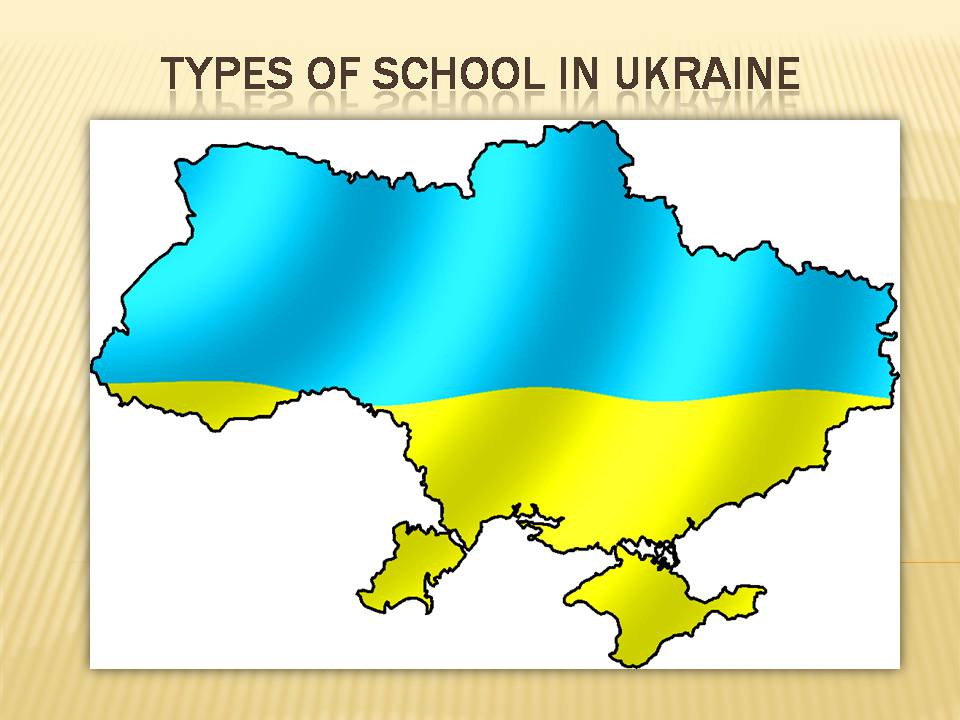
types of school in ukraine
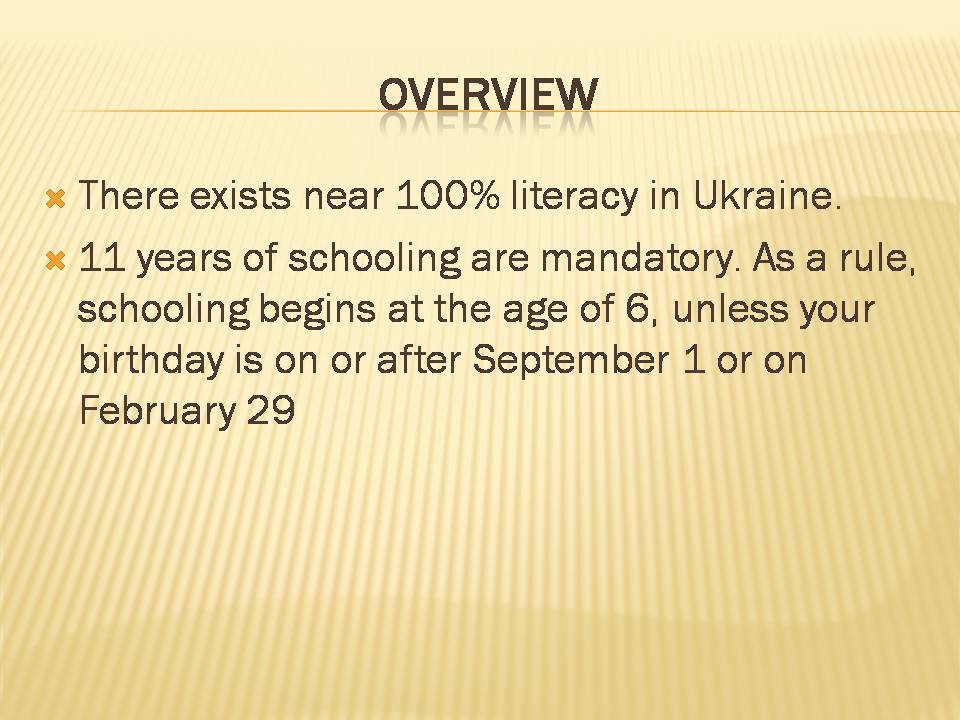
Overview
There exists near 100% literacy in Ukraine.
11 years of schooling are mandatory. As a rule, schooling begins at the age of 6, unless your birthday is on or after September 1 or on February 29
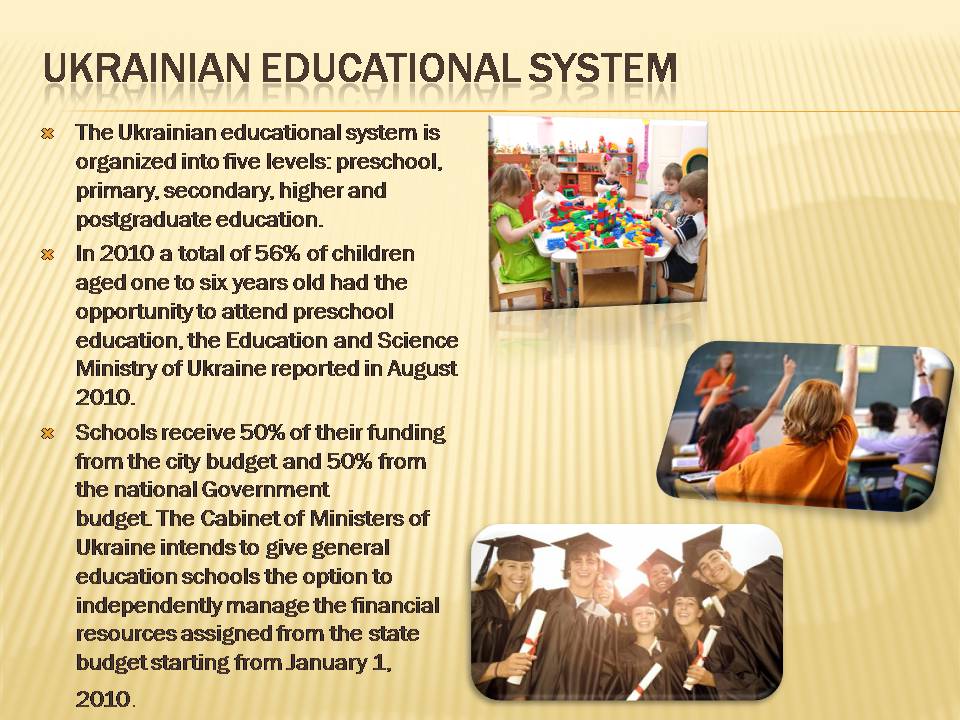
Ukrainian educational system
The Ukrainian educational system is organized into five levels: preschool, primary, secondary, higher and postgraduate education.
In 2010 a total of 56% of children aged one to six years old had the opportunity to attend preschool education, the Education and Science Ministry of Ukraine reported in August 2010.
Schools receive 50% of their funding from the city budget and 50% from the national Government budget. The Cabinet of Ministers of Ukraine intends to give general education schools the option to independently manage the financial resources assigned from the state budget starting from January 1, 2010.
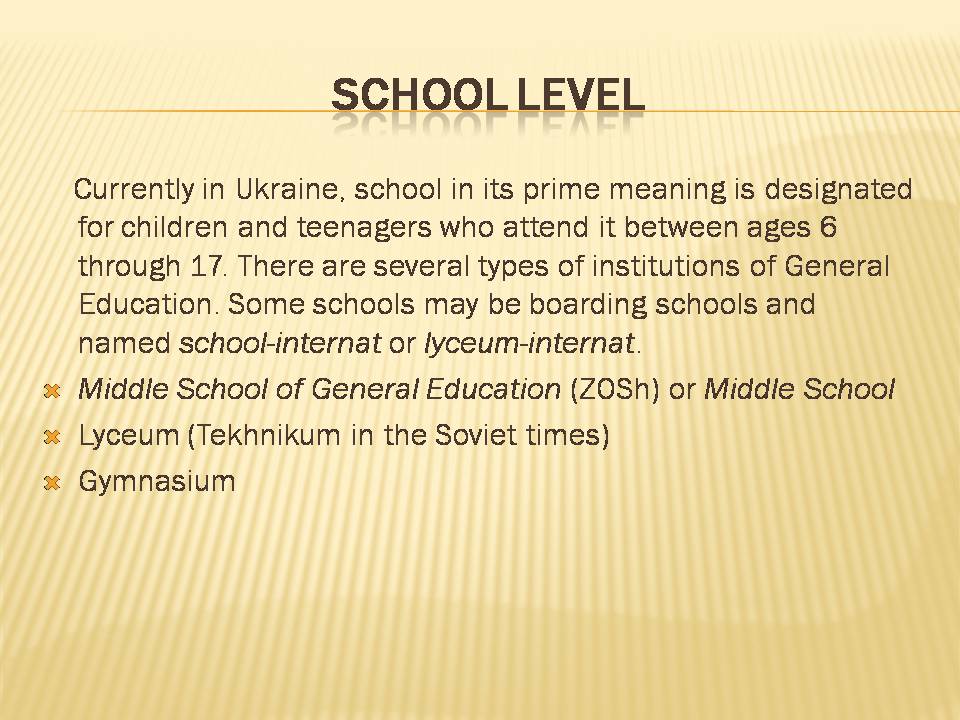
School level
Currently in Ukraine, school in its prime meaning is designated for children and teenagers who attend it between ages 6 through 17. There are several types of institutions of General Education. Some schools may be boarding schools and named school-internat or lyceum-internat.
Middle School of General Education (ZOSh) or Middle School
Lyceum (Tekhnikum in the Soviet times)
Gymnasium
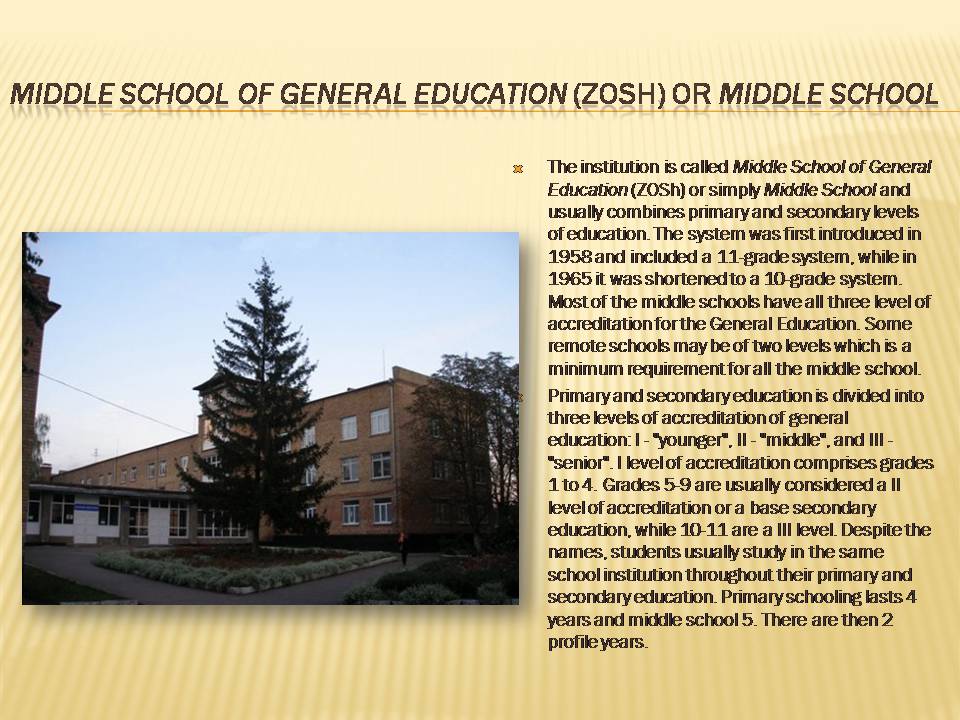
Middle School of General Education (ZOSh) or Middle School
The institution is called Middle School of General Education (ZOSh) or simply Middle School and usually combines primary and secondary levels of education. The system was first introduced in 1958 and included a 11-grade system, while in 1965 it was shortened to a 10-grade system. Most of the middle schools have all three level of accreditation for the General Education. Some remote schools may be of two levels which is a minimum requirement for all the middle school.
Primary and secondary education is divided into three levels of accreditation of general education: I - "younger", II - "middle", and III - "senior". I level of accreditation comprises grades 1 to 4. Grades 5-9 are usually considered a II level of accreditation or a base secondary education, while 10-11 are a III level. Despite the names, students usually study in the same school institution throughout their primary and secondary education. Primary schooling lasts 4 years and middle school 5. There are then 2 profile years.

The objective of general schooling is to give younger students knowledge of the arts and sciences, and teach them how to use it practically. The middle school curriculum includes classes in the Ukrainian language, Ukrainian Literature, a foreign language, world literature, Ukrainian History, world history, geography, algebra, geometry, biology, chemistry, physics, physical education, music and art. At some schools, students also take environment and civics classes. Students attend each class only once or twice a week, however. Part of the school day is also spent in activities such as chess, karate, putting on plays, learning folktales and folk songs, choir and band. After school, students might also have music lessons, soccer, hockey, or tennis.
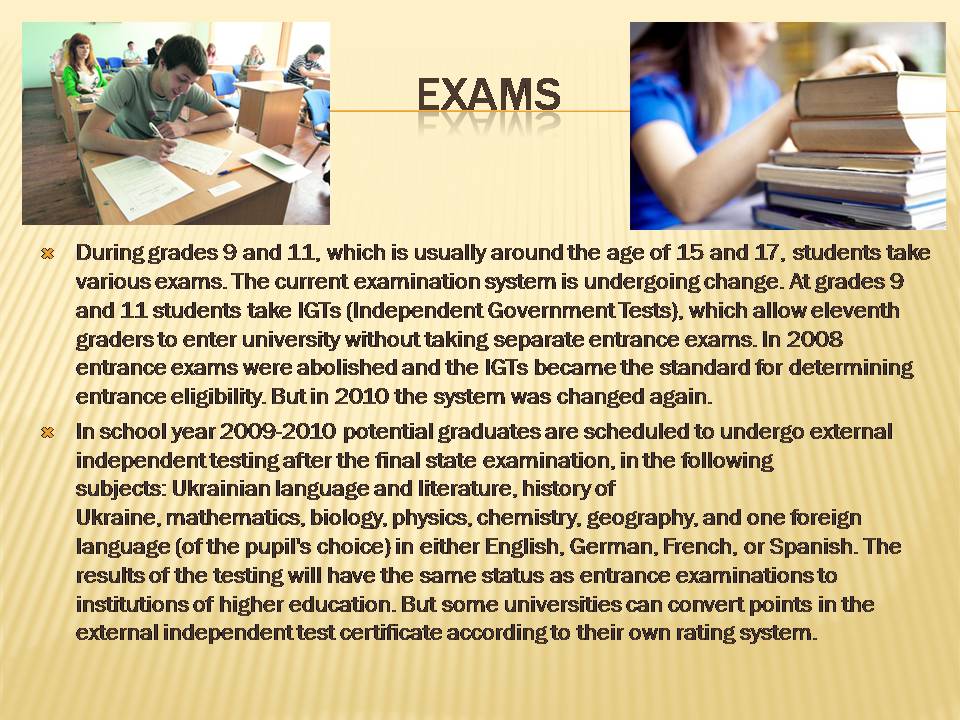
exams
During grades 9 and 11, which is usually around the age of 15 and 17, students take various exams. The current examination system is undergoing change. At grades 9 and 11 students take IGTs (Independent Government Tests), which allow eleventh graders to enter university without taking separate entrance exams. In 2008 entrance exams were abolished and the IGTs became the standard for determining entrance eligibility. But in 2010 the system was changed again.
In school year 2009-2010 potential graduates are scheduled to undergo external independent testing after the final state examination, in the following subjects: Ukrainian language and literature, history of Ukraine, mathematics, biology, physics, chemistry, geography, and one foreign language (of the pupil's choice) in either English, German, French, or Spanish. The results of the testing will have the same status as entrance examinations to institutions of higher education. But some universities can convert points in the external independent test certificate according to their own rating system.
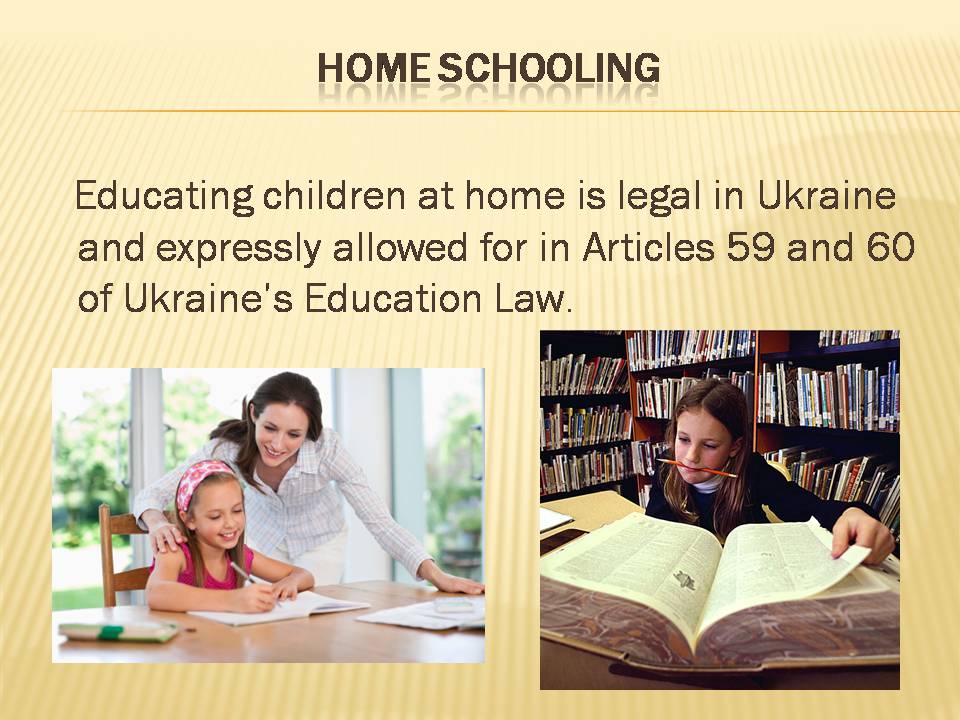
Home Schooling
Educating children at home is legal in Ukraine and expressly allowed for in Articles 59 and 60 of Ukraine's Education Law.
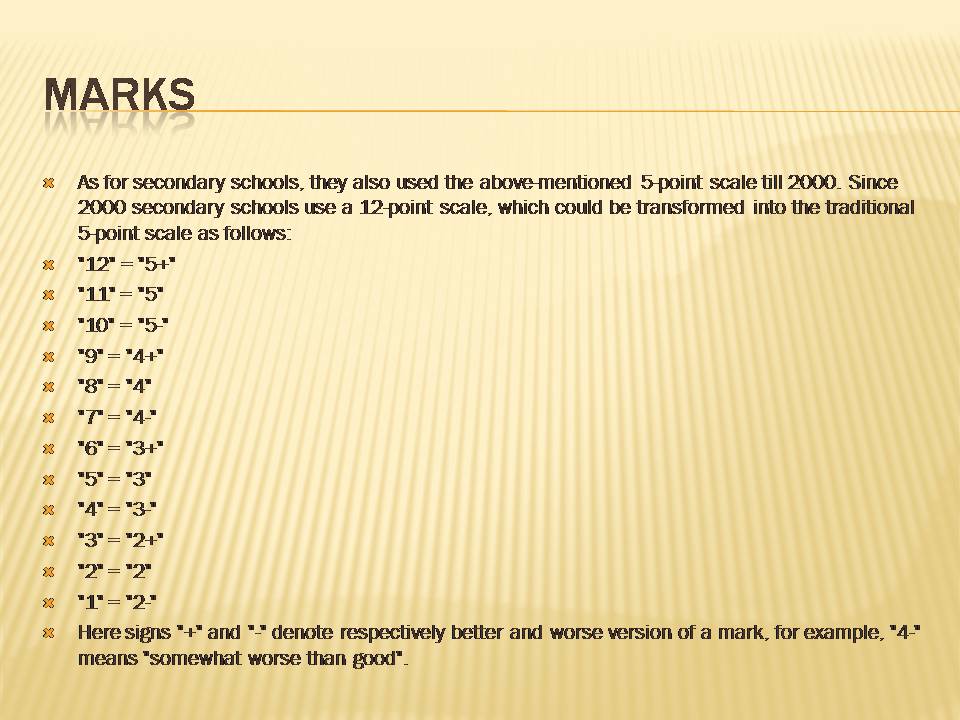
Marks
As for secondary schools, they also used the above-mentioned 5-point scale till 2000. Since 2000 secondary schools use a 12-point scale, which could be transformed into the traditional 5-point scale as follows:
"12" = "5+"
"11" = "5"
"10" = "5-"
"9" = "4+"
"8" = "4"
"7" = "4-"
"6" = "3+"
"5" = "3"
"4" = "3-"
"3" = "2+"
"2" = "2"
"1" = "2-"
Here signs "+" and "-" denote respectively better and worse version of a mark, for example, "4-" means "somewhat worse than good".